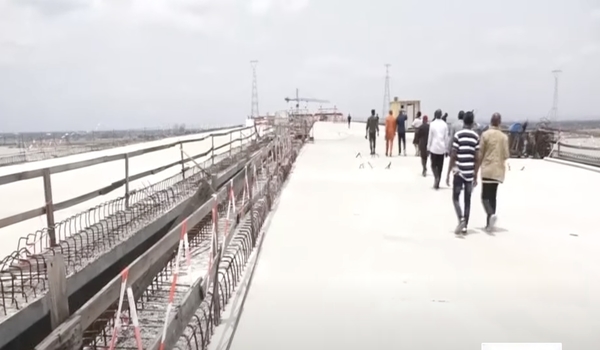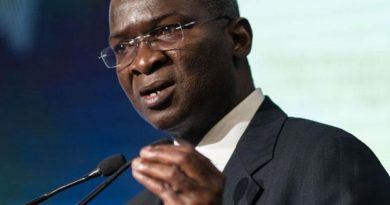Nigeria government says second Niger Bridge already at 91% Completion, unvailed October
The federal government has again inspected the ongoing construction works at the second Niger Bridge in a bid to ensure all is in place for the October deadline for completion and commissioning.
The Minister of Finance Zainab Ahmed led the facility inspection accompanied by the Managing Director of Nigeria Sovereign Investment Authority (NSIA), Uche Orji, and other government officials who toured the Obosi interchange axis of the bridge.
They disclosed that the ongoing construction of the Second Niger bridge is at 91 per cent completion while the total infrastructure of the bridge, which includes road, bridge and interchange, and others is presently at 84 per cent completion.
The Managing Director, NSIA, Mr. Uche Orji, who disclosed this on Sunday, confirmed that out of the total project cost of about N206 billion, only N157 billion had been spent on the infrastructure, which is central to south-eastern Nigeria and the nation as a whole.
“The total project cost is estimated at N206 billion. So far, about N157 billion has been expended on the project. It doesn’t mean that the outstanding sums won’t be utilised. This is just the expenditure to date.
“As it stands, the entire stretch of infrastructure i.e. road, bridge, interchange, etc is about 84 per cent done at this point while the bridge alone is over 91 per cent done,” he said.
According to Orji, while in terms of percentage, the major works have been done, the finishing works are quite extensive and would take a few months, stretching into October this year.
On the funding structure of the project, Orji noted that the Second Niger Bridge was one of the three projects being funded by the Presidential Infrastructure Development Fund. The other two projects, according to him, are the Abuja-Kaduna-Kano Road project and the Lagos-Ibadan express road project.
Orji explained that “The PIDF is a special fund set up by PMB and managed by the NSIA. The NSIA brought in some of its own capital alongside the capital provided by FG and the capital from returned loot from Sani Abacha.
“So, when you said PPP, it is the NSIA and the partnership of the federal government, and NSIA is the one coordinating the fund from investors.
“So, as it stands now, it is purely the NSIA and the federal government that is the face of the project today.
“The NSIA is an investment institution owned by all three tiers of government including the states and local governments, the federal government, and the federal capital territory which makes up the shareholders of the NSIA.
After the round of inspection, Ahmed had said: “Today is a very significant day in the construction circle of the second Niger bridge, this is one of the most iconic projects in the country at an initial contract cost of N206billion.
“Today, we have been able to fund this project with N157billion so far and I’m here to see where all this money is going. And also, the significance of today is that the two ends of the bridge are being put together and this is the final phase of the work in truly completing the project and the finishing work of the main works of the bridge.
“So technically, I can report to Mr. President that I have seen where all the N157 billion has gone to. This is a project that is very dear to the President and it is designed to uplift the lives and livelihood of the people of the South-east and other parts of the country we do hope that when this project comes on stream, it will ease traffic, enhance commercial activities and improve the lives of the people of the state.”
While extolling the virtue of Julius Berger, the contractor of the project, Ahmed added, “I am happy to see women working at the construction site and not only men. Julius Berger has brought some very unique innovations in the construction of this project and I want to on behalf of the government and people of Nigeria applaud the skills of the construction workers that have been working on this site.”
Furthermore, she said, “This project has been going on 24/7 all year round with people working in shifts and that the workers are operating from within here and in the surrounding states. Many jobs have been created. So up to about 20,000 people are working on this project.”
The project located in the southeast region of Nigeria is expected to boost economic activities and open up development in that part of the country.
The bridge aims to minimize traffic congestion on the old bridge and strengthen connectivity in the entire region.




